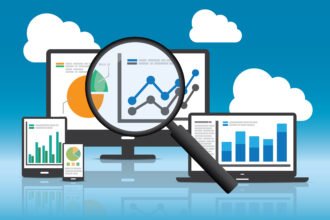Decision making is a big part of running a business, and in today’s world, big data drives that decision making. The power of big data has become more available than ever before. Big data has been highly beneficial to business.
Decisions like whether or not to expand a certain division or add a big contractor are understood to require painstaking data analytics, research and planning before execution. But, what about the seemingly small decisions that can be left to intuition or work experience – like what time of the day to send an email campaign, or if a button on your website should be blue or white?
With access to the right data, marketing decisions aren’t just made by intuition but established, verifiable facts. Data is one of the most important resources for any business. Data analytics helps you make the best choices for your business and customers.
Here are four things that will get you and your business on the data-driven path:
1. Understand Your Business
This seemingly obvious step is easy to overlook. At first glance, every business sells products or services, and has customers, goals, values, etc. Outside of that, it is important to know how your customers interact with your products, buying trends, what devices they use, what times they like to shop, and so much more.
Most businesses track a lot of this information already. Analytical tools are readily available from tracking email open rates, web and social media analytics. Businesses already have a wealth of data but understanding your business will help you identify a data need – what kind of data your business needs to collect and if it collects too much or too little of certain data. Collecting too much data would be overwhelming and too little – inefficient.
The right data will help define the right outcomes and ask the right questions. Google analytics, for example, allows businesses to track trends in visits and conversions. That kind of data can help businesses understand which pages convert better and ask why certain pages don’t perform as well.
Data-driven business growth is much easier for small businesses because of the relatively small size of the data collected, accessible tools and minimal skill required. Larger enterprises require professionals with advanced analytical skills to collect and analyze data.
2. Set clear goals
Data collection is just a step data-driven approach. The organization needs a clear sense of how that information will be used to achieve their specific goals that align with their mission and values. Set goals about the key problems or growth areas in your business.
Possible goals could be to increase conversion for an underperforming product or to test market-fit for a new product.
Once you’ve defined your goals, you’ll need to determine how to measure them. Based on the data available, define strategies to achieve these goals. Identify and establish key performance indicators (KPIs) that will be monitored closely. KPIs are important outcomes and positive or negative shifts show the effectiveness of different strategies.
Set goals and KPIs early on to avoid wasting valuable time and resources. Clear goals drive focus, set targets and standards for businesses and employees. Outcomes cannot be completely appreciated if there are no goals in place.
3. Test first
Testing is invaluable for generating useful insights into how hypothetical strategies would perform in practice. Testing is done to confirm inferences from big data or assumptions based on industry standards so testing can be done before, during or after gathering data. It involves testing the strategies defined by your goals. Testing can help businesses discover how customers interact with their business, understand the products to throw out and opportunities to enter new markets.
Split testing is an investigation method, commonly used in marketing to test variations of a campaign or approach and see which one performs better. Target users are randomly split into a control group and test groups and are shown variations of whatever is being tested. Test one variable at a time and determine its performance. It is impossible to track the cause changes when multiple variables are tested at a time.
Focus should be kept on KPIs as the primary metric that changes when the test variable is manipulated. Avoid distracting figures and values that could derail your experiment. For example, if you run a split test for a social media campaign, KPIs could be leads generated or conversion rate. Likes and follower count are not the primary goal so posts that gain the most engagement but don’t translate to leads will not be considered statistically better.
Sometimes, conclusions from data analytics may not be ones we like but, in the end, being data driven is about believing data and not feeling.
4. Iterations
Technology, user preferences, and industry standards change continually. Trends change very quickly and to stay on top, businesses should continually repeat the cycle of research, goal setting and testing.
You’ll be significantly better able to gain the insights that will drive positive change and smart growth if you utilize your data to track the proper metrics and focus on the most essential outcomes for your organization.
In conclusion, with the right training or knowledge and the right analytical tools, you can start making better business decisions with data to grow your business smarter and faster.








